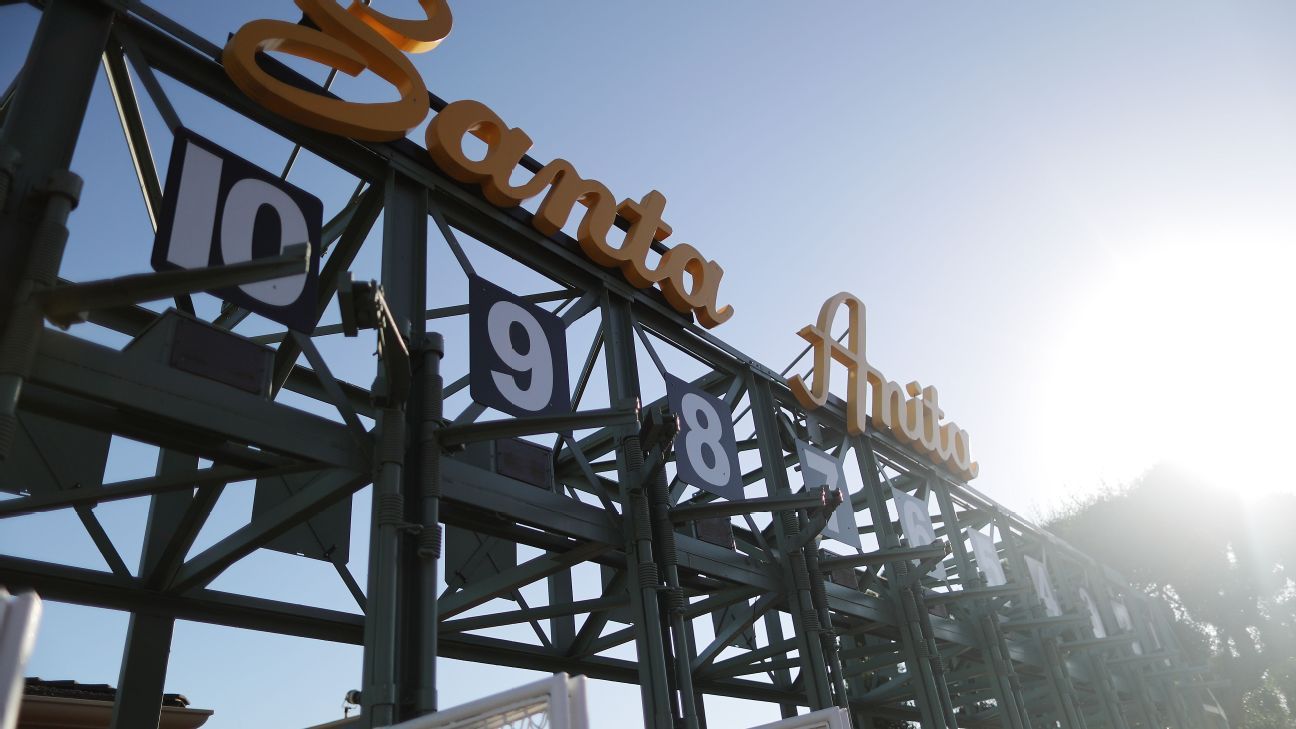ARCADIA, Calif. — Santa Anita is looking into the possibility of removing its dirt surface, where the majority of the track’s 36 horse deaths since December have occurred, and going back to a synthetic surface.
That’s according to Dr. Dionne Benson, chief veterinary officer for The Stronach Group, which owns the track.
“We haven’t ruled anything out,” she said Wednesday.
The drastic measure is being explored as a way to curtail the spate of deaths at the track, which is hosting the Breeders’ Cup world championships this weekend for a record 10th time.
In 2007, Santa Anita installed a mixture of silica sand, synthetic fibers, elastic fiber and granulated rubber with a wax coating after the California Horse Racing Board mandated the change for all of the state’s thoroughbred racetracks.
The surface experienced drainage problems the following year that cost the track 11 racing days, and it was eventually replaced by another brand of synthetic that failed to perform adequately under the extreme temperatures in Arcadia.
Statistics showed synthetics reduced the number of equine fatalities in California.
However, trainers and bettors were among those opposing the surface change, and Santa Anita returned to dirt in 2010.
Dr. Rick Arthur, the CHRB’s equine medical director, said Wednesday it would be up to track ownership with the consensus of the horsemen to change surfaces again.
“There were people that were unhappy with the track in spite of the rather remarkable (decrease in injury) numbers,” Arthur said of the first go-round.
Hollywood Park and its artificial surface went away in 2013 when the track closed. That forced the hand of Del Mar, north of San Diego, to return to dirt in 2015, leaving Stronach-owned Golden Gate Fields in the San Francisco Bay area as the last remaining artificial track in the state.
Los Alamitos in Orange County races on dirt.
The failed experiment cost an estimated $40 million to install artificial surfaces statewide.
“It’s a huge undertaking to put in a synthetic surface, and there’s some controversy with the trainers not all believing in the synthetic surfaces,” said Dr. Mick Peterson of the Racing Surfaces Testing Laboratory at the University of Kentucky.
Among the lessons learned from California’s initial attempt was that synthetic tracks could be inconsistent and challenging to maintain from morning training hours to afternoon racing. Heavy usage wore down the materials quickly, and more watering was often needed to obtain the correct consistency.
Track surface is just one factor that contributes to horse safety.
The Stronach Group ushered in changes in medication rules and new requirements for morning training, and added additional veterinary staff to increase examinations of horses before they race among other measures to improve horse safety after strong public outcry and criticism from Gov. Gavin Newsom.
The track will be under heavy scrutiny during 14 Breeders’ Cup races on Friday and Saturday in front of a national television audience.
“It’s very clear that horse racing, which is a traditional sport, has a new sense of openness, a new sense of transparency and a willingness to change,” said Craig Fravel, president and CEO of Breeders’ Cup. “That’s the first step in getting something done.”
